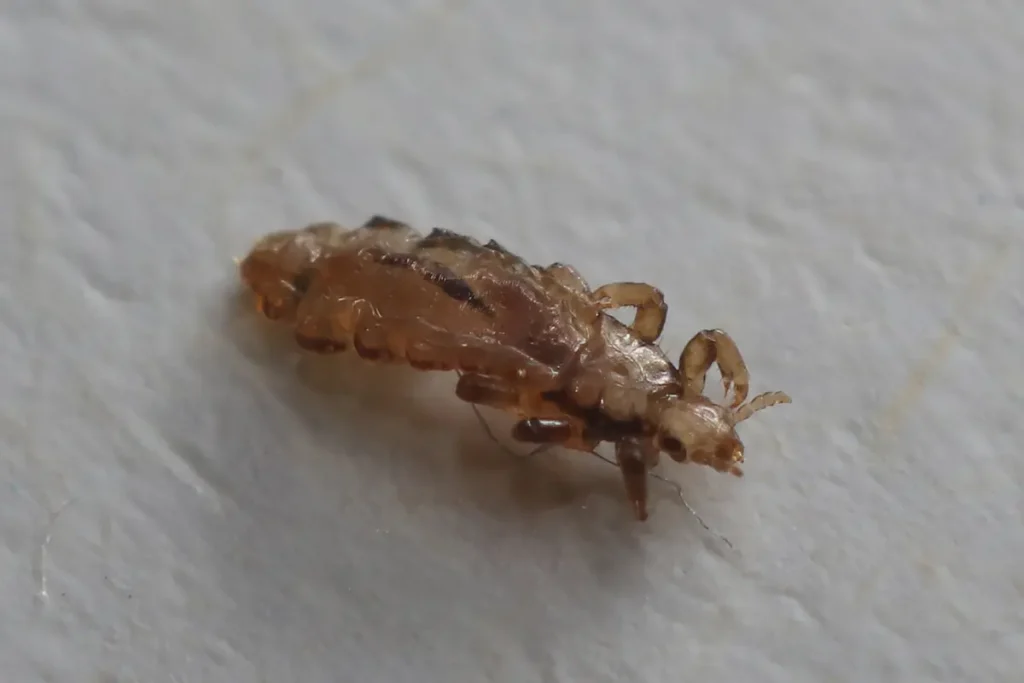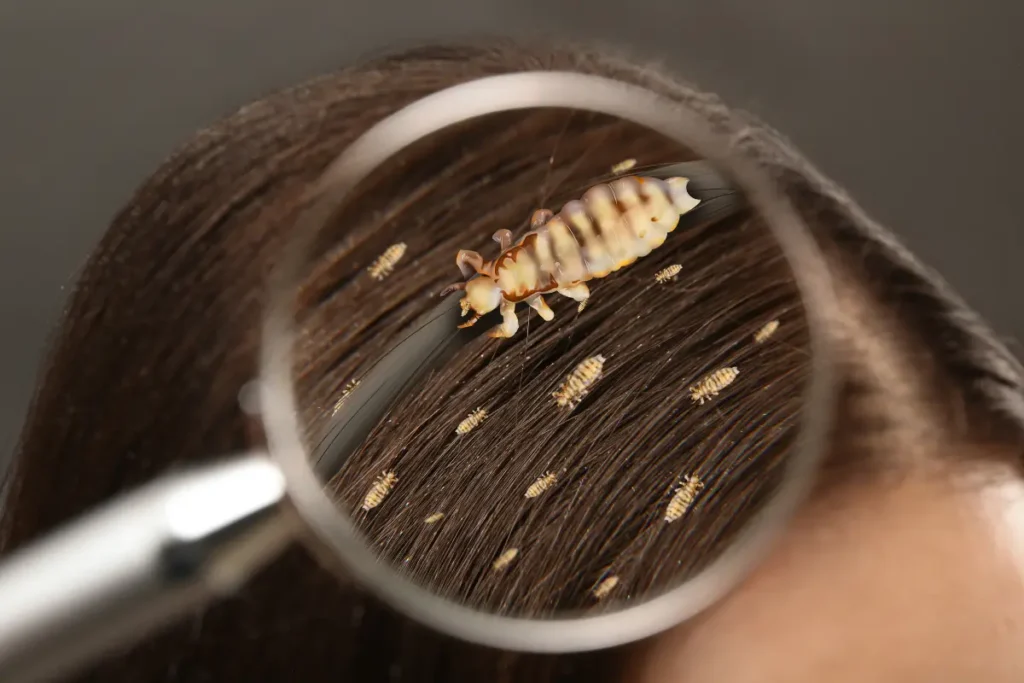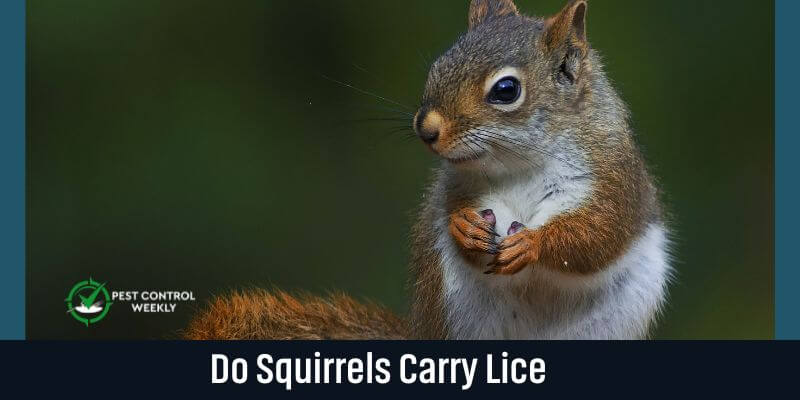Squirrels, like most animals, can have parasites like ticks, fleas, and mites on their bodies. This mutualistic relation can become parasitic if the parasites’ population starts spreading. The same can happen to squirrels, but do squirrels carry lice?
Yes, squirrels do carry lice in their fur like many other furry animals. Lice stick to the surface of skin underneath all the fur and suck on the blood of the squirrels. This way, the lice continue to live and grow on squirrels.
In this article, we are going to highlight the issue of lice in squirrels and what are the ways by which you can get rid of them. This way, you can save your squirrels from having any skin problems. Happy Reading!
What Is Lice?

Lice are tiny arthropods that thrive on the skin as well as the fur of pets. ‘Louse’ is the term that is used for singular lice. Lice are parasites, and they live by sucking on the blood.
Due to this, the pets or humans experience itchiness and irritation in the skin and ultimately develop anemia.
If the animals are left untreated, they develop pediculosis all over the body. Infestations are common in young pups, malnourished animals, or those that reside in unhygienic conditions.
The presence of lice is not familiar in pets or animals that are healthy. Lice are considered to be species-specific. It means that the lice that live on the hair and skin of the dogs will not be able to start living on other mammals.
So, the lice do not usually transfer between species that differ.
Typical insecticides are available to treat conditions caused by lice like pediculosis, pyrethroids, and pyrethrins.
How Do Squirrels Get Lice?

Squirrels are prone to skin parasites like mange, fleas, ticks, and lice. They can get it from other squirrels. It does not matter whether the squirrel has fur or not, the lice will still stick to the surface of the squirrel.
Sometimes, squirrels exhibit abnormal behavior if they have lice in their fur. They feel agitated and frustrated with the lice sucking on their blood constantly. Squirrels start scratching their fur by using their feet. These lice are primarily found in the winter, and the infestation rate is 100 % in this weather.
The rate of infestation drops to about 50% in august as well as in July. It is due to the hot and humid weather conditions. As high as 300 lice have been counted on the squirrel’s back, shoulders, neck, and back.
These lice are not on the belly usually. If they are present, there are chances that a rodent will cause harm to the squirrels.
The baby lice are called nymphs, and they aggregate on the rump of a squirrel. At this point, there is much low competition from adult lice.
Can Dogs Get Lice From Squirrels

For those of you who have dogs as pets and are constantly fearing squirrel lice will infest their dogs, it is time, to stop worrying. The lice are specific to species and usually do not feed on the dogs. In cases where the dogs get infested with lice, they are called as ‘canine pediculosis.’
Some symptoms can be noticed if your dog has lice. They have been stated as follows:
- Itchy skin
- Restless behavior
- Skin redness and irritation
- Constantly rubbing or biting the skin
- A dry coat of skin
- Hair loss around the groin, rectum, neck, ears, and back
- Constant prevalence can lead to anemia
- Constant laziness or lethargy
- The infected pups develop poorly.
You should be on the lookout for signs and do something to take timely action about it.
Can Humans Get Lice From Squirrels?

There are no chances of squirrel lice being transferred to humans and infesting them. This is due to the reason that lice are specific. The other flea species are not that much picky about who to infest.
For instance, the bird fleas feed on the squirrels, which can later be transferred to birds. They can even bite people too. This is not the same in the case of lice. That is why you should not worry about it all.
You do not need to worry about getting lice for those who have squirrels in their yards or have them as pets. You can easily remain lice-free and proceed with treating your squirrels and making them lice-free.
How Do You Get Rid Of Squirrel Lice?
You can get rid of the squirrel lice yourself in numerous ways. In this article, you will read through some ways you can quickly eliminate lice from squirrel bodies and they may heal quickly.
- You can use the available insecticides on the market which have been designed to kill squirrel lice.
- You can use a manual method like the lice comb to get rid of the lice present in the squirrels’ fur.
- You can also have a lice-killing solution at home by mixing an equal ratio of water and vinegar. You can spray it on the squirrel and use a cloth to wipe away the lice.
- The easiest way is to purchase tick and flea drops. Only a single drop is sufficient to eliminate the lice in a single area.
- Similarly, you can choose a spray or put that medication on a cotton ball instead of directly applying it to the animal. The eye area of the squirrels must be avoided.
- Anti-lice shampoo is also available in the market. All you have to do is wash your squirrel with warm water and apply the shampoo. Then rinse it with water and blow dry your animal to get the best results.
Wrapping It Up
The squirrels carry lice in their fur and if you are a squirrel- keeper, you must always be on the lookout for them. You can follow the appropriate measures to get of lice and prevent your animals from succumbing to infestation.
The methods mentioned above keep your squirrels safe and this will ensure a healthy lifestyle for them. You, as humans should not be worried about the transfer of squirrels in your body as lice are species-dependent.
References
Lance A. Durden, Seasonal Abundance of Fleas (Siphonaptera) and Sucking Lice (Anoplura) on Gray Squirrels, Sciurus Carolinensis, in Central Tennessee, USA, Journal of Medical Entomology, Volume 17, Issue 5, 30 September 1980, Pages 483–484

